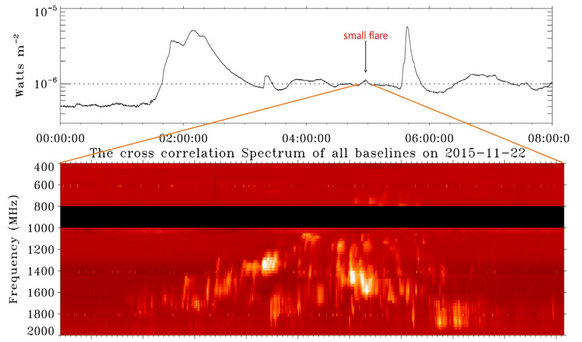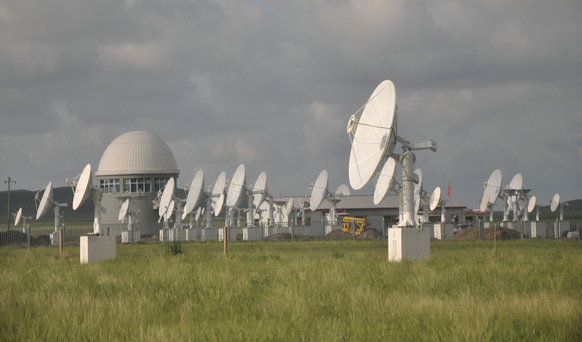MUSER published the latest observational results of solar radio bursts
Solar radio bursts are associated with different types of powerful eruptions, such as solar flares, CMEs, and various thermal and nonthermal processes. They are believed to arise due to the fast energy release process because of topological reorganization of solar magnetic field or magnetic reconnection and to be the prompt indicators of the disastrous space weather events.
Solar radio observations, especially at centimeter and decimeter wavelengths, are most important for revealing the key physics about the primary energy release, particle acceleration and transportation, and the crucial precursor of solar storms.
Recently, Prof. Yihua Yan and his research team from National Astronomical Observatories of Chinese Academy of Sciences (NAOC) reported the detailed observational results of the new generation solar radio telescope - Mingantu Spectral Radio Heliograph (MUSER) - during the past 5 years from 2014 to 2019. These results may help us better understanding the basic nature of solar eruptions.
The results were published in Frontiers in Astronomy and Space Sciences on March 29, 2021.
MUSER consists of 100 antenna spreading over three spiral-shaped arms with maximum baseline length of 3 km on the grassland in Inner Mongolia. Its configuration is optimized to meet the needs of observing the full solar disk over ultrawide frequency range of 0.4-15 GHz with images of temporal resolution of 25-200 ms, spatial resolution of 1.3-51.6 arcsecond, spectral resolution of 25 MHz and high dynamic range of 25 dB. MUSER is the best and most powerful solar radio telescope in the world at present.
MUSER provides a unique powerful tool to measure solar magnetic fields and trace dynamic evolution of energetic electrons in wide frequency range, which, in turn, will help have better understandings of the origin of various solar activities and the basic drivers of space weather.
From the MUSER observations, the scientists can capture the most sensitive radio signals of even very small solar eruptive event, which addresses the MUSER’s powerful capability to monitor the solar activity and the disastrous space weather events.
MUSER observations also yield the images of solar magnetic fields covering from the solar chromosphere up to the higher corona, which help us to understand the physics of various solar activities involved and the basic drivers of space weather activities.
"MUSER and its extension to metric and decametric wavelengths will further play the role of the new generation radio heliographs, and will be the major solar-dedicated leading radio facility in the world for carrying out solar physics and space weather studies," said Prof. Yihua Yan, Chief Scientist for Solar Physics at NAOC and the first author of this research paper.

Fig. 1: Superfine spectral structure observed by MUSER in a very small flare. (Credit: NAOC)

Fig. 2: MUSER on the grassland in Inner Mongolia of China. (Credit: NAOC)
The research paper is available at https://www.frontiersin.org/articles/10.3389/fspas.2021.584043/full
Media Contact: Prof. XU Ang, annxu@nao.cas.cn